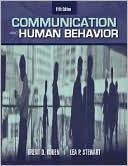Category Books
- Fiction Books & Literature
- Graphic Novels
- Horror
- Mystery & Crime
- Poetry
- Romance Books
- Science Fiction & Fantasy
- Thrillers
- Westerns
- Ages 0-2
- Ages 3-5
- Ages 6-8
- Ages 9-12
- Teens
- Children's Books
- African Americans
- Antiques & Collectibles
- Art, Architecture & Photography
- Bibles & Bible Studies
- Biography
- Business Books
- Christianity
- Computer Books & Technology Books
- Cookbooks, Food & Wine
- Crafts & Hobbies Books
- Education & Teaching
- Engineering
- Entertainment
- Foreign Languages
- Game Books
- Gay & Lesbian
- Health Books, Diet & Fitness Books
- History
- Home & Garden
- Humor Books
- Judaism & Judaica
- Law
- Medical Books
- New Age & Spirituality
- Nonfiction
- Parenting & Family
- Pets
- Philosophy
- Political Books & Current Events Books
- Psychology & Psychotherapy
- Reference
- Religion Books
- Science & Nature
- Self Improvement
- Sex & Relationships
- Social Sciences
- Sports & Adventure
- Study Guides & Test Prep
- Travel
- True Crime
- Weddings
- Women's Studies
Communication and Human Behavior » (5th Edition)

Authors: Brent D. Ruben
ISBN-13: 9780205417902, ISBN-10: 0205417906
Format: Paperback
Publisher: Allyn & Bacon, Inc.
Date Published: May 2005
Edition: 5th Edition
Author Biography: Brent D. Ruben
Book Synopsis
Communication and Human Behavior offers students a broad introduction to the study of communication which is expansive yet integrated, that links theory to practice, and that is rigorous yet readable. Neither a watered-down treatment of the subject nor a how-to text, this new edition presumes that the study of communication in human affairs is a complex phenomenon with important and far-reaching effects. Employing a thorough description of a variety of approaches and using the cohering insights of systems theory, Communication and Human Behavior presents to students the broad and colorful landscape of the field, outlines the history of communication study, and focuses on communication as a basic life process.
Booknews
A comprehensive look at human communication as a fundamental life process from the level of individual to organizations and society. Fourteen chapters cover: definitions and theories, the development of communication study, basic function, message reception and interpretation, verbal and nonverbal codes, the media, relationships, groups, organizations, cultures and societies, and public and mass communication. Annotation c. by Book News, Inc., Portland, Or.
Table of Contents
1. Introduction-Definitions and Theories.
Why Study Communication?
Theories: Guides for Analysis and Action.
Defining Communication.
Fundamentals of Communication.
Communication: A Definition.
Goals of Communication and Human Behavior.
2. The Field of Communication.
Early Communication Study.
The 1900s - 1930s: Development of Speech and Journalism.
The 1940s and 1950s: Interdisciplinary Growth.
The 1960s: Integration.
The 1970s and Early 1980s: Growth and Specialization.
The Late 1980s - 1990s: The Information Age.
The Twenty-First Century: Communication Study Today
3. The Evolution of Communication Theory
The Evolution of an Idea
The Twentieth Century
Communication Theory in the Twenty-First Century
Reflections on the Evolution of Communication Theory
4. Communication—A Basic Life Process.
Communication Processes in Animals and Humans.
Communication Modes.
Basic Functions of Communication.
Beyond S-M-R=E: The Adaptation Perspective.
5. Fundamentals of Human Communication.
The Communication Iceberg.
Visible Aspects of Communication.
Invisible Aspects of Communication.
6. Message Reception.
Selection.
Interpretation.
Retention - Memory.
Receiver Influences.
Message (Information) Influences.
Source Influences.
Technological and Environmental Influences.
An Active and Complex Process.
7. Verbal Messages.
Message Production.
Encoding and Decoding.
Process Versus Meaning-Centered Models of Communication
The Nature of Language.
Language Acquisition.
Representation.
Conversation.
Social and Public Communication.
8. Nonverbal Messages.
Similarities between Verbal and Nonverbal Communication.
Differences between Verbal and Nonverbal Communication.
Paralanguage.
The Face.
The Body.
Gestures-Kinesics.
Touch-Haptics.
Time-Chronemics.
Messages and Meanings: MS=MR.
9. Media.
The Tool-Making Animal.
Media and Their Functions.
Types of Media.
Evolution of Communication Media: From Smoke Signals to the Internet.
Impact of Media on Contemporary Life.
Technological Convergence.
The International Scene.
Mediated Communication: A Mixed Blessing.
Media and the Quality of Life.
10. The Individual.
Reaction, Action, and Interaction.
Interpretation.
Cognitive Development.
Self-Development.
Self-Expression.
Self-Awareness.
11. Relationships.
Interpersonal Communication and Relationships.
Types of Relationships.
The Evolution of Relationships.
Relational Patterns.
Factors That Influence Patterns.
12. Groups.
Groups: Fiction and Fact.
Why People Join Groups.
Types of Groups.
Group Development.
Group Culture: Symbols, Rules, and Codes.
Decision-Making.
Roles and Responsibilities.
Leadership.
Cohesiveness.
Conflicts in Groups.
Mediated Groups.
13. Organizations.
Communication and Organizations.
Organizational Goals.
Roles and Responsibilities.
Management Functions.
Organizational Theories.
Communication Networks.
Organizational Culture.
Organizational Climate.
Organizational Diversity.
14. Cultures and Societies.
The Nature of Culture.
The Relationship between Communication and Culture.
Characteristics of Culture.
The Role of Mediated Communication.
Cultural Adaptation.
Intercultural Communication.
Societies—Complex Cultural and Communication Systems.
Information Societies.
International Communication: The Global Village — Fact or Fiction.
15. Public and Mass Communication.
What Is Public and Mass Communication?
The Role of Public and Mass Communication.
Understanding Public Communication.
Understanding Mass Communication.
The Effects of Public and Mass Communication.
Index.
Subjects
 Media
Media  Communications - General & Miscellaneous
Communications - General & MiscellaneousNonfiction
 Psychology
Psychology  Psychology - Theory, History & Research
Psychology - Theory, History & ResearchNonfiction
 Social Sciences
Social Sciences  Media & Communications
Media & CommunicationsNonfiction
 Social Sciences
Social Sciences  General & Miscellaneous
General & MiscellaneousPsychology & Psychotherapy
 Psychology - Theory, History & Research
Psychology - Theory, History & Research  Behavioral Psychology
Behavioral PsychologyScience & Nature
 Social Sciences
Social Sciences  Media & Communications
Media & CommunicationsScience & Nature
 Social Sciences
Social Sciences  General & Miscellaneous
General & MiscellaneousSocial Sciences
 Media & Communications
Media & Communications  Communications - General & Miscellaneous
Communications - General & MiscellaneousMedical Books
 Psychology & Psychotherapy
Psychology & Psychotherapy  Psychology - Theory, History & Research
Psychology - Theory, History & ResearchNonfiction
 Entertainment
Entertainment  Media
Media
